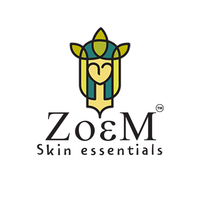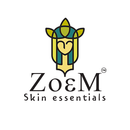How to best treat Acne scars
Acne vulgaris, more commonly referred to simply as acne, is a chronic inflammatory disorder of the pilocebaceous unit that affects at least 85 percent of teenagers and at least 25% of adults.
Clinical characteristics of acne vary with age, pubertal status, gender, and race.
Acne has been implicated in psychiatric and psychological processes more than most other dermatological conditions. There are many aspects of this disease that contribute to its non dermatological effects including predominant adolescent prevalence, anatomical distribution of lesions, misconceptions regarding aetiology and social pressures. Adolescence is a time of significant physical, emotional, and social development, which may predispose individuals to psychiatric or psycho social complications. Distribution of acne lesions is limited to areas with well-developed sebaceous glands including the face, back, chest, and upper arms. Unlike other dermatological conditions, which may be limited to areas covered by clothing, acne is apparent.
Individual and social perceptions of acne can affect the effect of the condition. In a study of acne patients in a dermatologists care, almost 30 percent believed that poor skin hygiene was a causative factor of acne.If this belief exists among a patient population who has had some degree of education by their physicians, similar beliefs must also exist in the general population. Beliefs similar to this one create a stigma that can lead to feelings of embarrassment, shame, and guilt in the afflicted. Finally, Western society places a great emphasis on physical appearance. It is not surprising that, when patients were asked in what way their acne bothered them, the most common response was appearance.Acne vulgaris can have significant non dermatological effects because of the specific population affected, distribution of lesions, incorrect perceptions regarding aetiology of the condition, and the strong emphasis placed on physical appearance.
Let’s debunk together what is acne, why it comes in our lives, how to prevent it & all natural plants that give recurring acne a permanent cure along with how to prevent acne scars, naturally.
So What is Acne?
Acne are pink occluded pores (comedones) on the surface of our skin- they are a common disease of the hair follicles of the face or chest, back, other affected body part- in fact the location of the acne could give you some hints on what’s happening inside.
What Acne is not?
Disorders without a microcomedo as the initial pathologic condition are no longer classified as “acne”. A microcomedone is the very beginning of an acne lesion. When sebum is produced in excess and dead skin cells get clogged in the pores, that’s when a microcomedone occurs. Every blemish begins with a microcomedone. Treating comedones at this stage largely prevents the bigger acne breakouts.
Relation between acne and its location on your face
Acne on forehead- Problem with bladder and intestines, digestive system, stress, sweat.
Acne in between eyebrows- Liver & stomach-Dehydration, Alcohol,oily foods.
Acne on nose- Heart, blood pressure, poor circulation and excess salt intake.
Acne around lip area-Hormones & Intestinal-Hormonal imbalance, Ovulation, Reproductive organs, menstrual cycle
Acne around chin- stomach, kidney reproductive organs, dehydration, hormonal imbalance, oily foods
Acne around ears and temples-Kidneys, Dehydration, Stress, Excess oil production
Acne under eyes- Kidney, liver and intestines, lack of sleep, dehydration, dirt from makeup and rubbing eyes
Acne on cheeks- Lungs and respiratory system, allergies, dirty pillows, bedsheets, smoking, polluted air
Acne on Jawline- Dirt and oily foods
Can some bacteria cause acne?
If your pores are clogged, overproduction of sebum can lead to a build up of blemishes. Sometimes makeup residue can also lead to bad bacteria clogged.
Always, cleanse your makeup thoroughly before you go to sleep and exfoliate twice a week for normal skin and once a week for other skin types. An all natural gentle sugar scrub is good for exfoliation of the face.
Make sure your pillow covers and bed sheets are always clean.

Can you ignore acne?
Absolutely Not. Here is why.
Skin diseases such as acne are sometimes thought of as unimportant, even trivial, when compared with diseases of other organ systems.
The acne patients (a relatively severely affected group) reported levels of social, psychological and emotional problems that were as great as those reported by patients with chronic disabling asthma, epilepsy, diabetes, back pain or arthritis. The skin actively responds to psychological stress, with involvement of skin immune cells, hormones, neurotransmitters. Skin immune cells actively regulate tissue inflammation with their proinflammatory and anti-inflammatory effects. Stress-induced skin reactions primarily include cytokine secretion (e.g. interleukin-6, interleukin-1, interferon-γ) and activation of skins peripheral corticotropin-releasing hormone (CRH)-proopiomelanocortin (POMC)-adrenocorticotropic hormone (ACTH)-corticosteroids axis, which leads to acute/chronic secretion of corticosteroids in the skin.
Acne is not a trivial disease in comparison with other chronic conditions. It can have severe psychological effects and can leave severe skin scarring.
Why does acne happen in teenagers more?
Acne is usually considered a disorder of adolescence, and a number of studies have examined the prevalence of this condition in the adolescent population. There are, however, relatively few data on the prevalence of acne in the adult population.
When you are near your age of puberty, the hormonal changes happening inside your body can cause them.In other words the androgens being produced at this time, activate your oil glands which in turn swell up and become larger in size.
An interesting research on adult acne by American Academy of Dermatology
A community-based study was carried out to investigate the current prevalence of facial acne in adults.
Seven hundred forty-nine persons older than 25 years were examined for facial acne by means of the Leeds acne-grading technique. A degree of facial acne was recorded in 231 women and 130 men, giving an overall prevalence of 54% (95% confidence interval [CI], 49-58) in women and 40% (95% CI, 35–45) in men. The acne observed in volunteers consisted principally of physiological acne, but clinical facial acne was recorded in 3% of men and in 12% of women.The prevalence of acne did not substantially decrease until after the age of 44 years (P<.001).
Conclusion :This study shows a prevalence of clinical facial acne in women of 12%, which is likely to persist into middle age.
So how to get rid of acne permanently?
Acne can leave stubborn scars on our face, acne scar removal is extremely important but let us first see how to reduce acne in the first place.
The first and foremost action I recommend if you have recurring acne or severe acne- throw away all your skincare products and treat your skin like a new-born. Strictly. Just use one natural cleanser and one natural moisturiser. That is all. No makeup, no medications, no other products.
Use a soothing cleanser made in lavender, chamomile, cucumber or green tea and for repair-one of these 7 powerful ingredients are what you should consider.
- Macerated oil of Calendula for its anti-inflammatory powers
- BHA (BetaHydroxyAcid) Salicylic Acid for its pore-cleansing powers.
- Lavender hydrosol, lemon verbana hydrosol, rosemary and neroli hydrosols for their soothing , calming and oil balancing powers.
- Aloe vera gel for its soothing, hydrating properties.
- Jojoba oil for its sebum like properties to reduce excess oil production.
- Tea tree oil for its anti-bacterial properties.
- Green tea extract to reduce redness & irritation.

How to get rid of acne scars?
Post-acne scars have significant psychosocial distress among people, especially women. Here are the top 4 natural ways of healing acne scars.
1. Rosehip seed oil
One of the best treatments of acne scar removal or to heal pimple scars is rosehip seed oil- but it should be used carefully.
I also like rosehip seed oil so much because it is one of the best natural source of retinoic acid which works brilliantly for acne scar removal treatment, burns scars and eczema scars.
When it comes to cosmetics, rosehip seed oil is one of best plant oils you can use on your skin. Rosehips have long been used for medicinal purposes, given their high Vitamin C content. Although rosehips grow in many parts of the world, the best is from Chile – Rosa Affinis Rubiginosa. This oil is high in Essential fatty acids and Vitamin A as well. Essential fatty acids are crucial nutrients for the maintenance of healthy skin as they provide tissue regenerating and rejuvenating effects and can also act to reduce inflammation and hence one of the most trusted natural methods on how to treat deep acne scars.

2. Carrot seed oil
This is one of my personal favorite oils for acne scar removal treatment. Wild carrot or (Daucus carota). It is the only oil which has vitamin A, B, C,D,E,F and K!! It can stimulate circulation, repair and tone the skin, increase elasticity, as well as reduce the formation of wrinkles and scars.
3. Tamanu Oil
A bit expensive due to its low yield per tree per year (not more than 5 litres per tree per year) but if you can , use Tamanu oil especially for mature skin (30+, though can be used for younger age too) for its anti-infammatory , scar treatment properties.
4. Sea buckthorn oil
Sea Buckthorn Oil (Hippophae rhamnoides) – It contains high levels of essential fatty acids and is used to heal skin injuries such as eczema and not just its scars Use it with jojoba and argan oil .

Happy Skin!
Vibhuti


Leave a comment